Continuing on from my post about guimpes, I’ve been noticing all sorts of costuming words that I see, and can guess what they mean, but never properly research.
My latest word is pardessus. V&E posted a gorgeous 1874 pardessus pattern that started my research.
Pardessus, unglamorously enough, just means ‘overcoat’, from the French ‘passed over’.
We can see the term, or variants of it, used in early French fashion magazines.
The notes for this fashion magazine from 1814 described the garments as
1. Robe de Levantine et fichu-canezou garni en broderie. Chapeau en Gros de Naples garni dune ruche de gaze.
2. Canezou de velours. Jape de reps garnie en rouleaux. Chapeau en velours epingle garni de plumes d’Autruche.
3. Par-dessus four-6 en merinos garni de chinchilla. Toque de velours plein garni de roses.
The term pardessus gained popularity in English in the 1840s as a term to describe a mantle, along with pelisses, paletots, camails, and crespins. Mentions of pardessus are most common in English fashion magazines in the ’40s & ’50s, and American in the ’60s.
At first the term was used almost interchangeably with paletot for a short to half-length coat, though there seems to be a quirky distinction in that pardessus was often, though not always, trimmed with fur or velvet. Occasionally an almost full-length coat-cape was called a pardessus.
A pardessus could be either quite loose, or fitted at the waist, depending on the wearer and the fashions of the season. A June 1848 fashion article describes
The pardessus were never prettier than this winter; the forms are various, whether in velvet, satin de chine, casimir or drap cachemir; those for young ladies, of satin a la reine, are with sleeves and made close to the waist.
The design of the pardessus would also depend on the inspiration, with pardessus inspired by seasons, historical & mythological figures, such as Madame de Maintenon, as well as exotic cultures, such as the Turkish inspired ‘pardessus bizantin‘.
Here are some examples of 1850s & 60s pardessuses (pardessi? pardessusen? or is the name plural itself?).
An unfitted late 1850s pardessus with cunning zig-zagged and tasseled faux-hood:
And it comes with a pattern!
The caption for these two pardessuses from 1861 reads “We illustrate two styles of Spring Pardessus, which are among the most pleasing of the season. They are made of silk of two colors, and ornamented with passamenterie and lace”.
Like the Spring Pardessus No 2, this pardessus from 1861 is almost floor-length.
In 1863 we see another, unfitted pardessus. The pattern for this one is given here. As you can see from the pattern, unfitted they are a very easy, basic shape.
Want to some real woman in a pardessus?
The Viscountess Somerton’s unfitted pardessus has the classic fur trim, though she may also have called her coat a paletot. (on a side note, does anyone else look at her hat and want to start singing “Whip it”?)
And to make things even more obscure, here is the famous (or infamous, depending on how you look at it) Countess de Castiglione posing in a photograph titled “Le pardessus dècore”, though we can’t be sure if the title indicates the exact garment, or just that she was covered.
In the 1870s the pardessus changed. An 1875 fashion article describes the change:
The new pardessus…is made rather full, long in front, falling at the sides, but short behind; the sleeves are wide. When the pardessus is in malatesse it is generally trimmed with feathers or fur, but when in cashmere or sicilienne; lace, beads or spangles are preferred.
You know what that sounds like? Long in front, short behind, wide sleeves? That sounds like the infamous Pingat mantle.
Yep, that’s what pardessus became after the 1870s!
By the 1880s pardessus as a name for a specific garment (as opposed to a general term for an outer wrap) seems to have fallen off. An article from 1887 describes how changing fashions make extra outergarments superfluous, and how “the redingote has taken the place of the pardessus.
And so ended the fashion


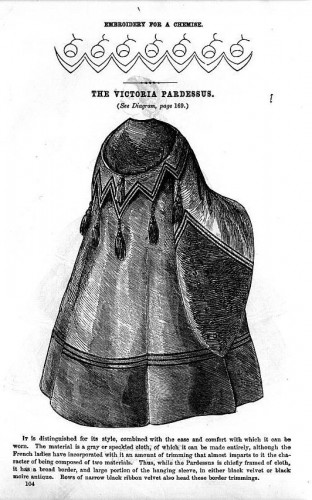
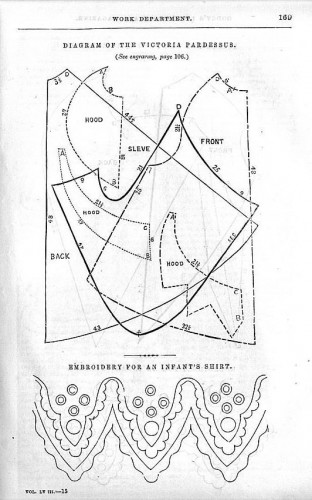
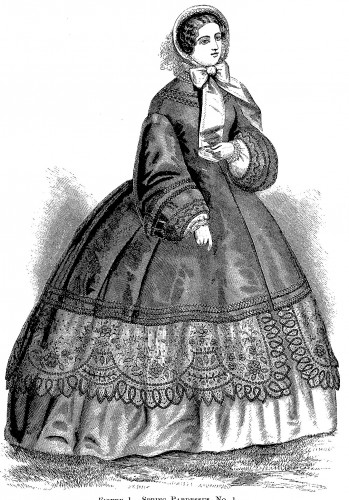

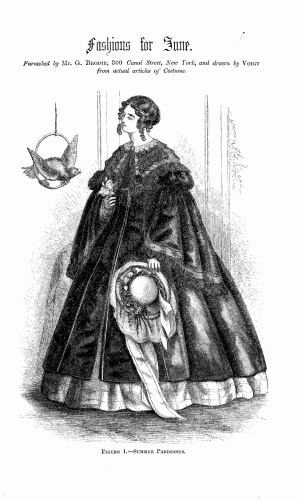
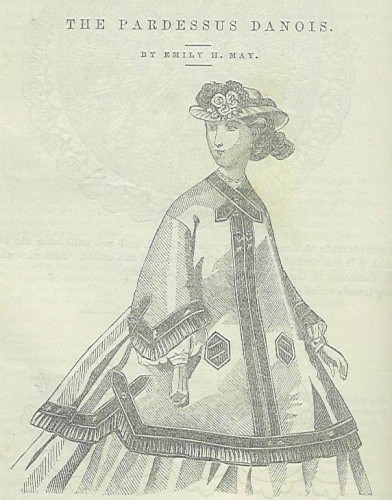


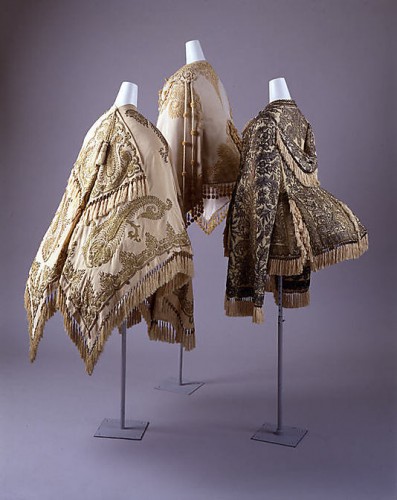
I’m Flemish and in our dialect we still use this word. We mean a men’s traditional long coat by it.
How interesting! I think it is still used in France as well, as a sort of generic term for an overcoat.
You know, I never heard the term, and I did my fair share of shopping. Sounds like a good day to do some more shopping–er, linguistic research!
Fascinating! I really love these posts looking into the old terminology.
Funnily enough, guimpe was one of the first old fashion terms I ever learned. I was given a nineteen-teens dress when I was in my early teens by my then mentor of vintage clothing and he taught me that term when he was telling me about that period. I still get reminiscent whenever I hear that word.
What a lovely story!
I’m enjoying writing these posts, and might make them a regular, weekly, feature.
Just discovered your site (was pointed this way by the lovely Wearing History). I love this kind of thing! Just fascinating.
Well, welcome, and thank you!
Excellent explanation of the name & its evolution. There are so many terms for different outfits, it gets confusing if we’re talking about the same thing.
The paintings really helped me to “see” the garment. I like the long ones more than the short ones. Thanks.